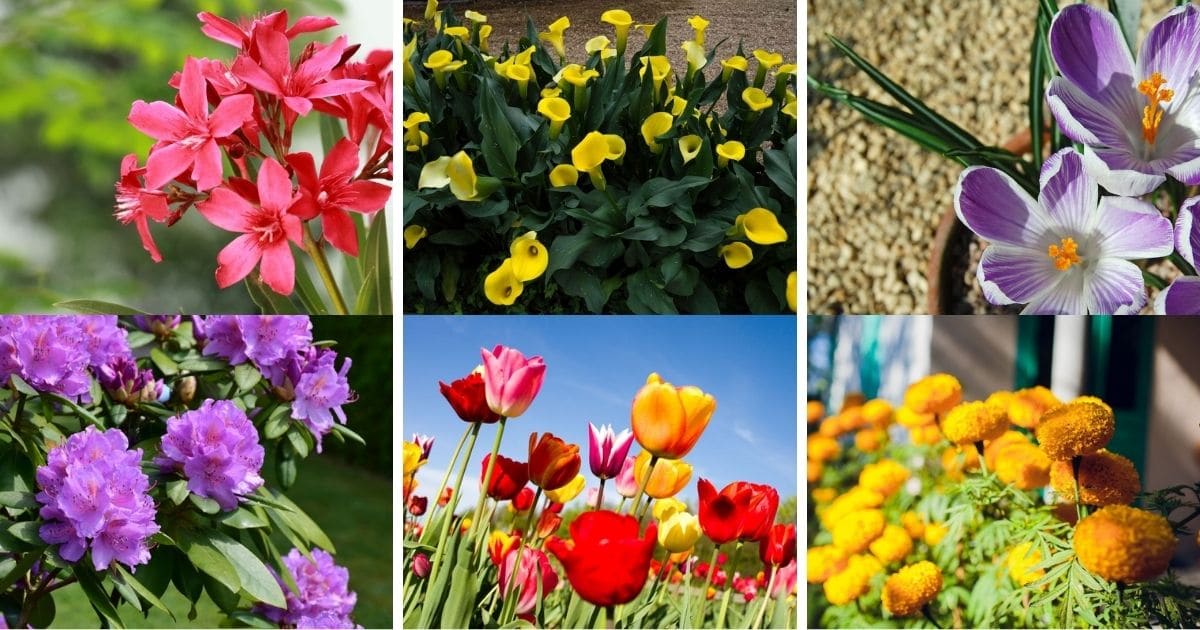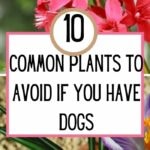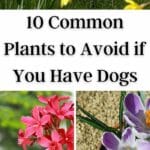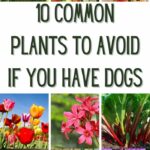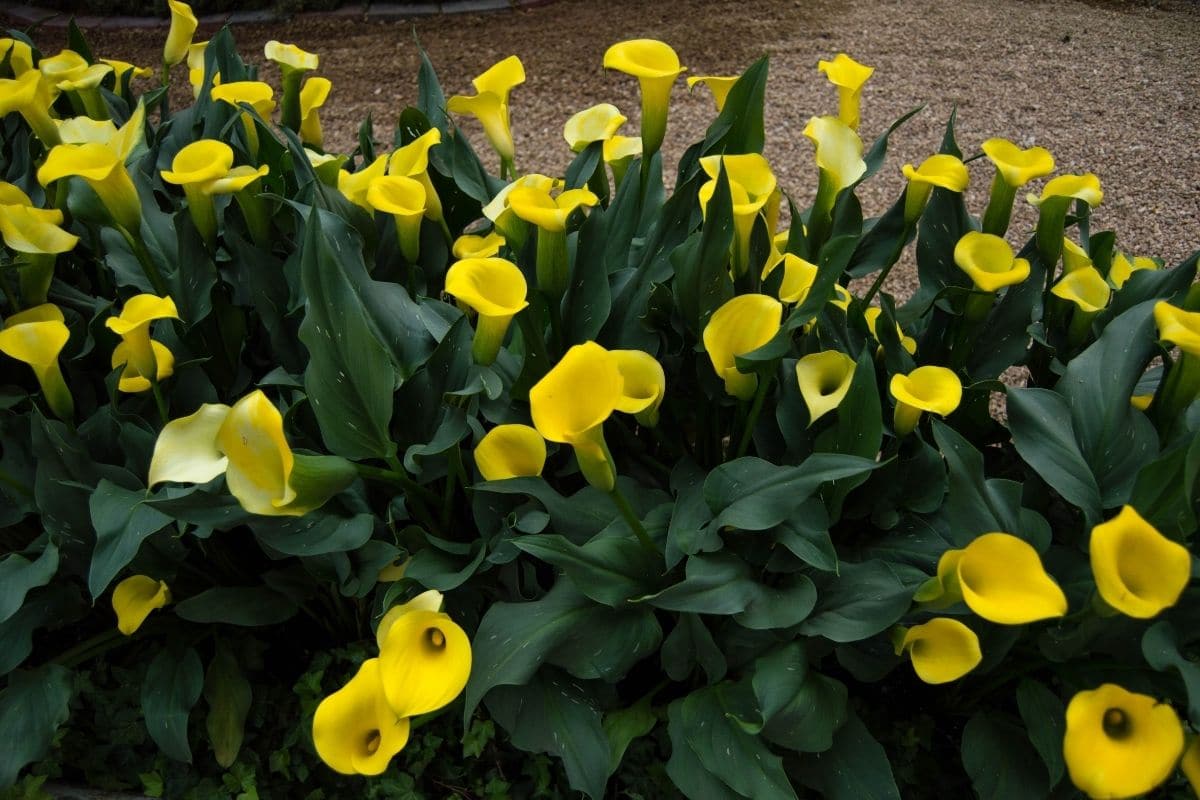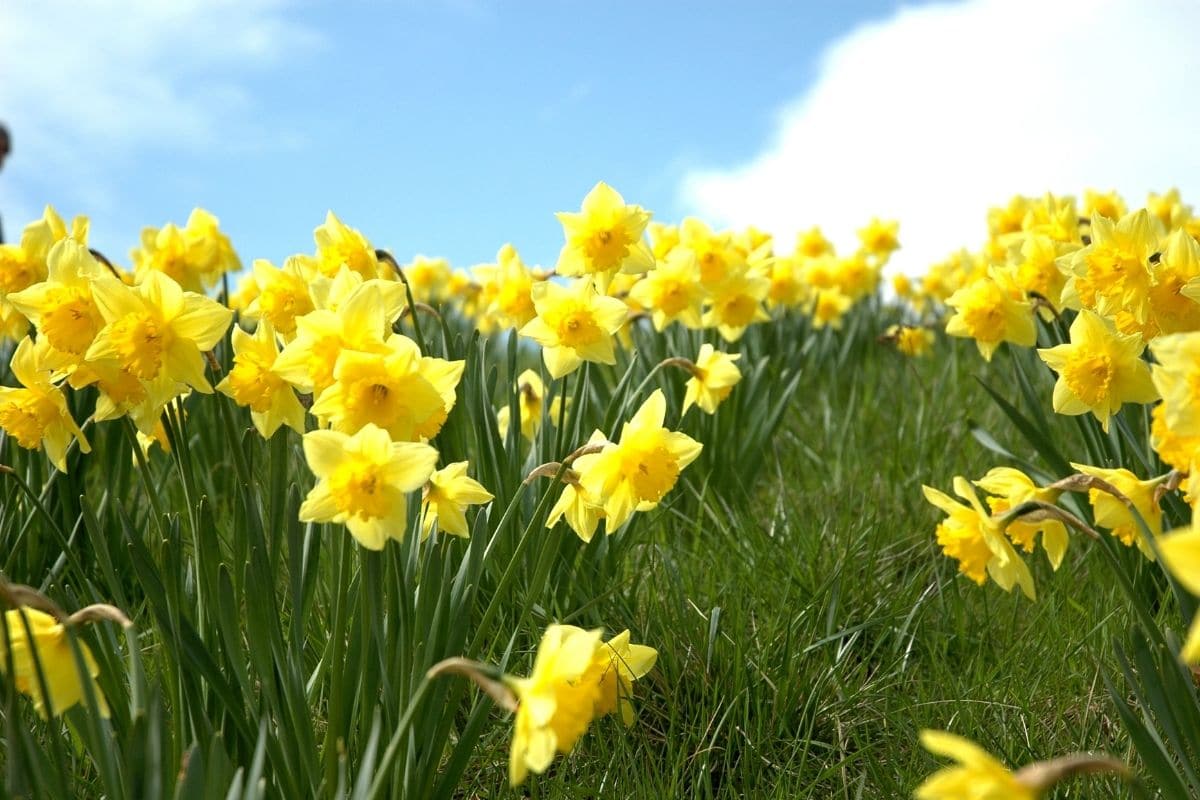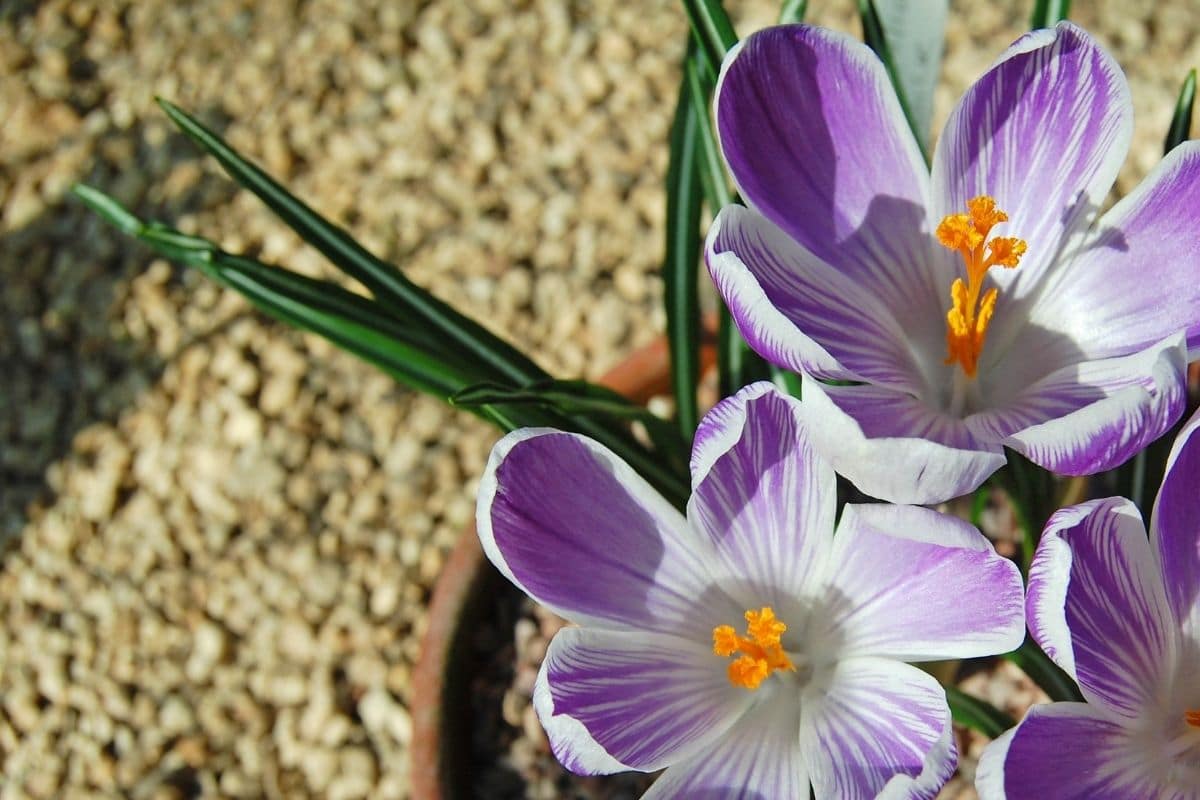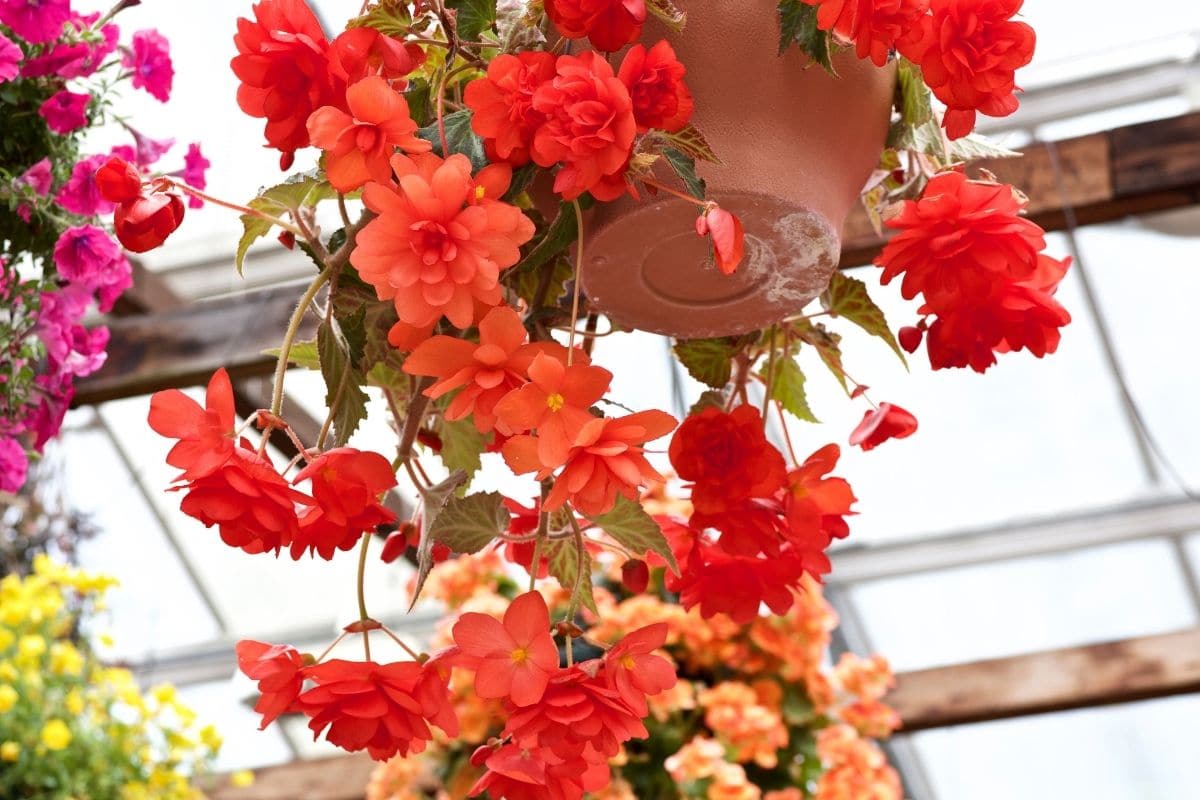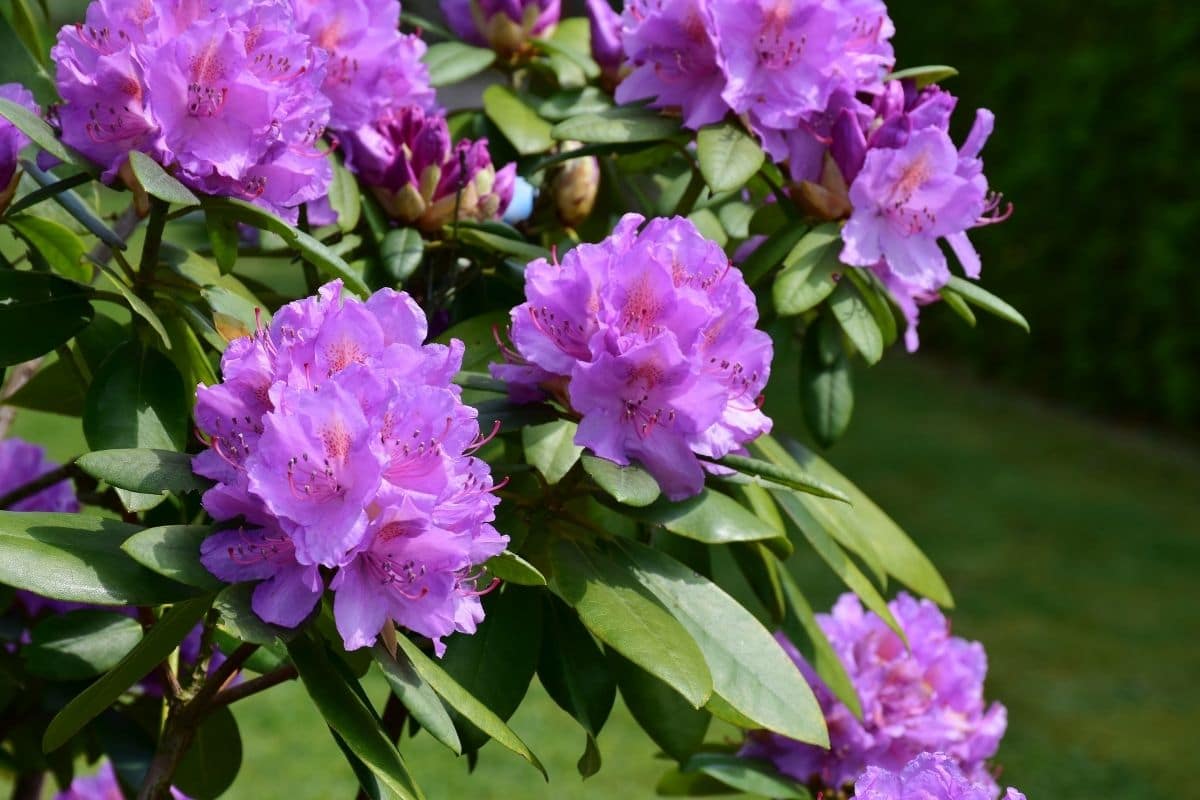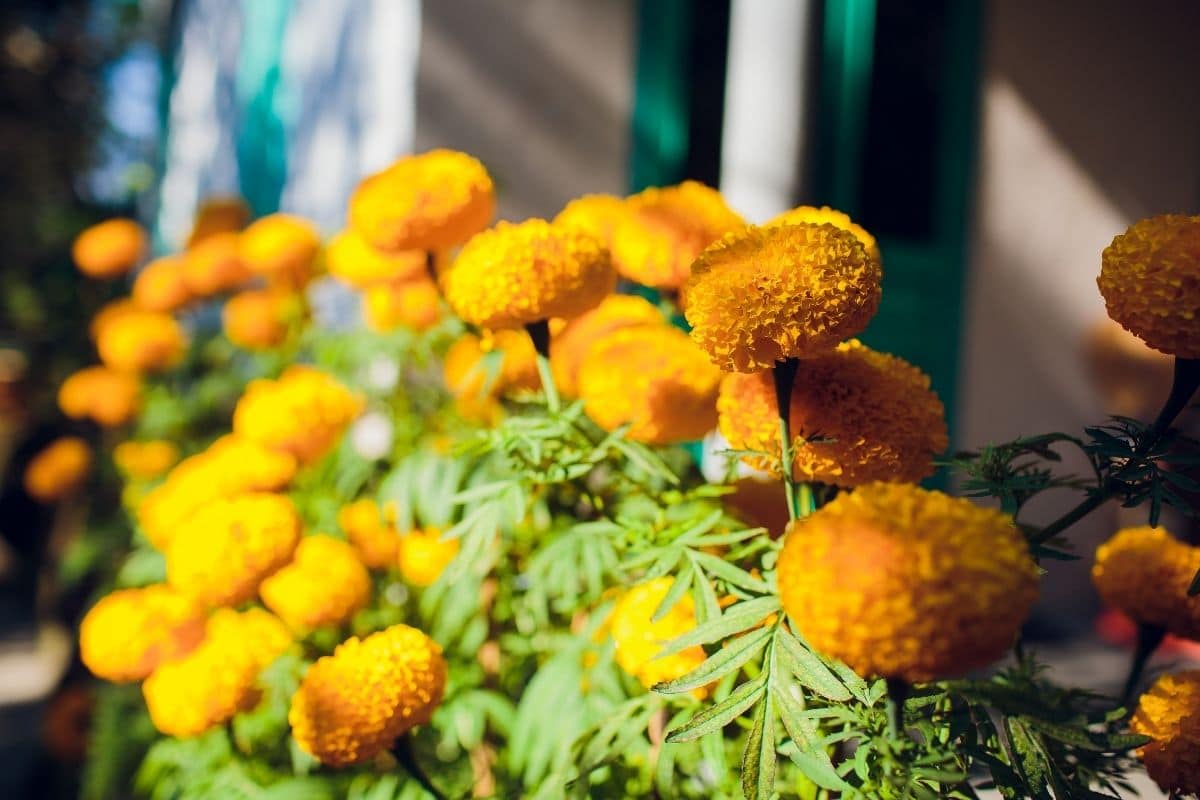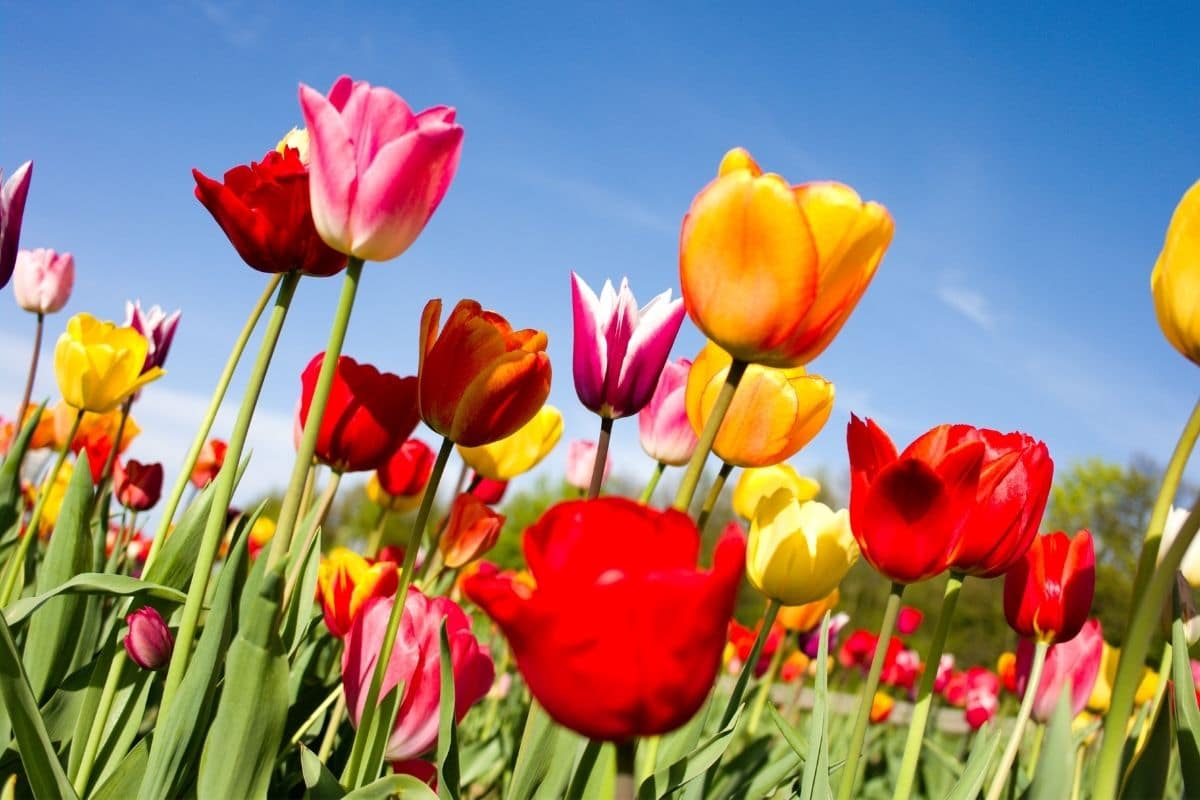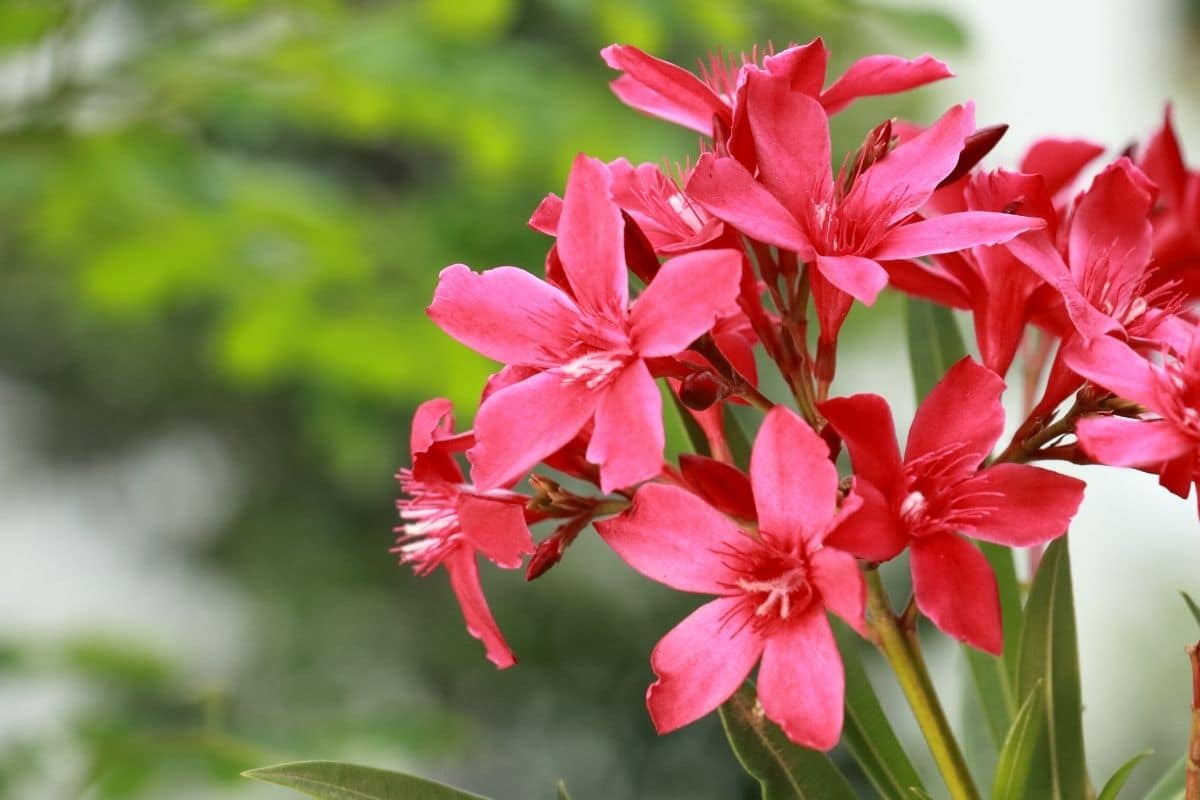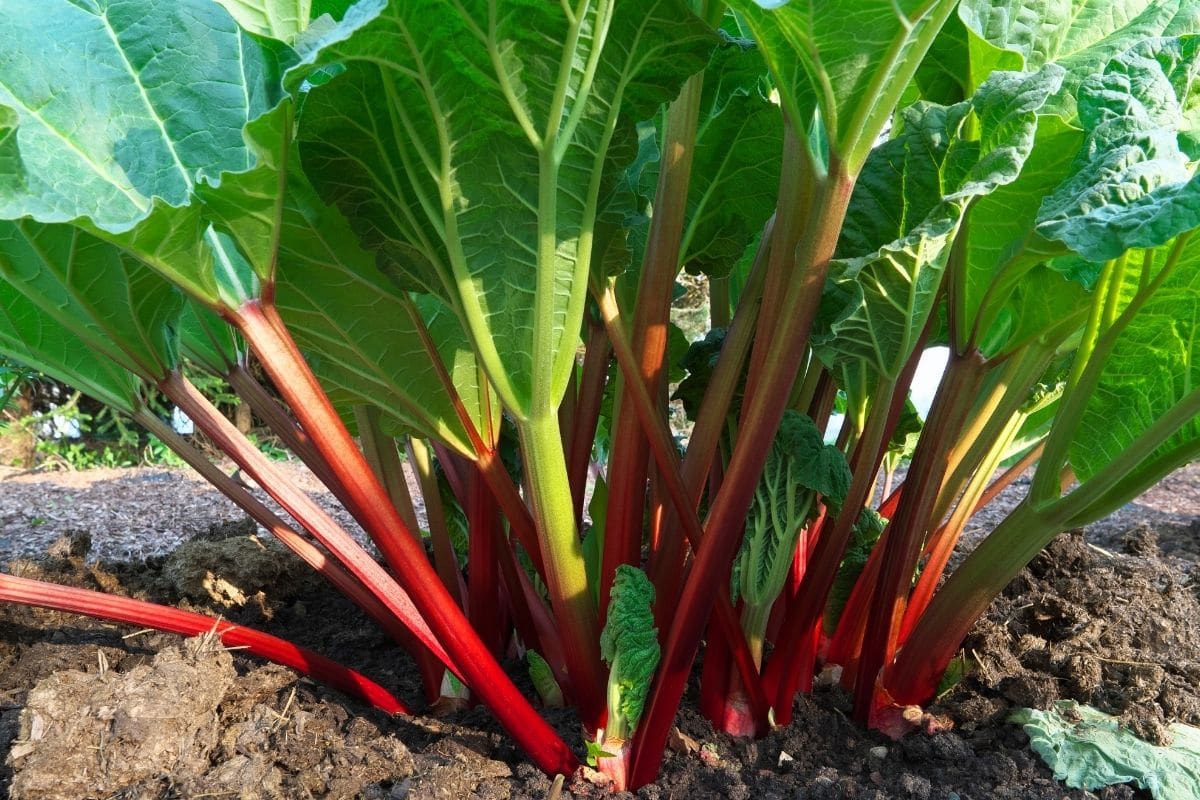[ad_1]
There are some common plants to avoid if you have dogs – here is an overview.
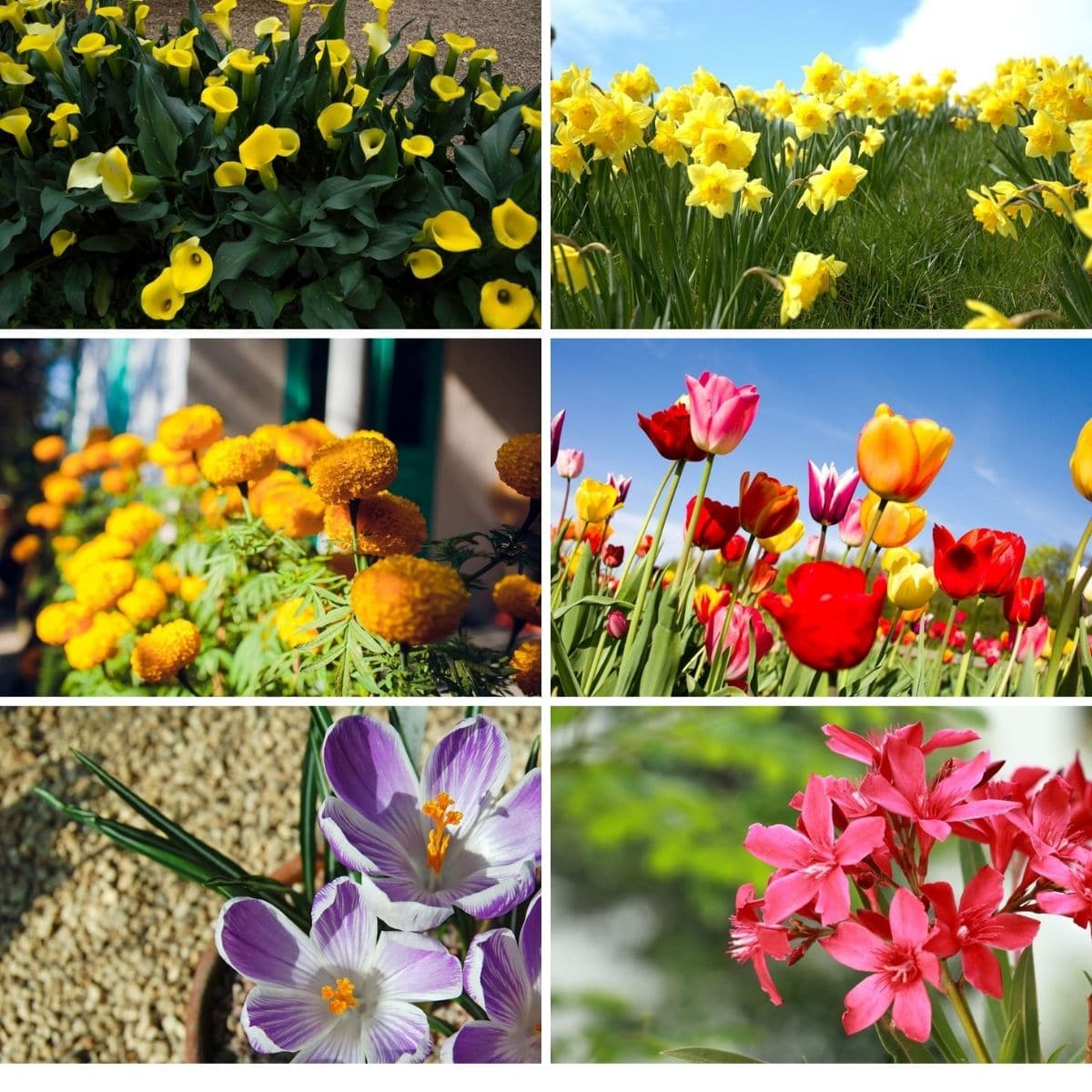
While some dogs may be more likely to cause harm to your plants than your plants are to the dog, there are some plants that are toxic and are best avoided if you have dogs. While there are many plants that may cause your dog to have an upset stomach if eaten, there are also some which can cause serious illness or in extreme cases, even death.
If your dogs have free roamed over your property, it is generally best to avoid planting any plants that are toxic to them. However, if your dogs stay within a fenced area, you may be able to safely consider certain toxic plants in other areas of your property where your dogs do not have unattended access.
Knowing your dogs and their habits may also be a good indicator of what plants you can grow, as some dogs couldn’t care less about your plants, while others may have the tendency to be naughty—this is especially true of many puppies.
There is a long list of plants that are toxic to dogs, and most of these plants are unassuming—many gardeners grow them without knowledge of their toxic traits. Unfortunately, many common plants do pose threats to animals, including dogs, when eaten. Knowing which plants have the ability to cause ailments in your dog is a good first step to avoid accidental harm to your pets.
10 Common Plants to Avoid if You Have Dogs
While you may still be able to plant some of these in your garden or yard, you will want to be very careful about your dogs having access to them. These are best left out of the house if your dog is a mostly indoor pet. Of course, it is always best to keep them out of your garden plans if possible.
Looking for more tips about gardening? You’ll also want to check out these top gardening hacks that are ideal for making sure your garden grows. So many great ideas here to make sure you are making the most of your garden space!
1. Lilies
There are several different varieties of lily, and some are more toxic than others. Those that have more mild toxicity to dogs include peace, Peruvian, and Calla lilies. These varieties of lily cause mild signs of toxicity once ingested such as vomiting and stomach pain; however, these lilies do not generally cause major illness or death. The toxic effects are caused by oxalate crystals that are found in every part of the flower.
While some lilies only cause minor illnesses in dogs and other animals, there are some that are much more dangerous and should be kept out of reach of any pets if possible. True lilies, such as tiger, Easter, daylily, Asiatic, and Japanese show lilies can lead to serious illness and even death in some cases if consumed.
Every part of these plants, even the pollen, is toxic and can lead to complete kidney failure in as little as 36 hours. Initial symptoms include lethargy, vomiting, and appetite suppression. If you suspect that your dog has ingested any part of one of these plants or is exhibiting any of the initial symptoms, he or she should be taken to an emergency vet right away.
Want a lily in your bouquet but don’t want to take a chance? Check out this handmade old book page calla lily tutorial! Such a fun way to keep the flower you love forever!
2. Daffodil
Daffodils are a classic spring flower that is a favorite among many. What some gardeners may not realize is that daffodil flowers are toxic to dogs—even the bulbs pose a health risk if eaten. Daffodils and daffodil bulbs contain a chemical compound called lycorine which induces vomiting. While ingesting this chemical does not generally lead to death, it can make your dog very ill.
Common symptoms that may be seen in your dog if he or she has gotten into your daffodils include drooling, nausea, vomiting, diarrhea, abdominal pain, abnormal breathing, and heart rhythm abnormalities. If your dog is displaying any of these symptoms, it is important that you call your vet—or an emergency vet after hours—for a recommended care plan to help your dog through this illness.
Keep your pups happy with homemade treats for dogs instead of letting them snack on the flowers in your garden!
3. Crocus
Crocuses come in two primary varieties, crocus speciosus—which bloom in the spring, and colchicum autumnale—which bloom in the fall. The spring-blooming crocus plants are less toxic than the fall-blooming variety, but they should still be avoided in areas where your dogs may be left unattended. The spring-blooming crocus flowers may cause vomiting and diarrhea if ingested by a dog, but they are unlikely to cause any permanent harm.
The fall-blooming crocus flowers are much more dangerous to your dogs than the spring-blooming ones. These flowers contain a chemical called colchicine, which is highly toxic to dogs. If ingested, it can cause gastrointestinal bleeding, severe vomiting, kidney damage, liver damage, and respiratory failure.
If you suspect your dog has eaten a fall-blooming crocus flower, or if he or she is displaying any of the previously mentioned symptoms, it is important to take your dog to a vet right away.
4. Begonia
The begonia is another common and popular plant that is toxic to dogs. The first symptom that your dog will experience if he or she starts eating your begonia plants is intense burning and irritation of the mouth. While this symptom is uncomfortable for your dog, it may keep him or her from ingesting more of the plant, which is the best-case scenario.
If your dog does ingest begonia flowers, he or she may experience severe vomiting, excessive drooling, and difficulty swallowing. Thankfully, this will rarely lead to any permanent damage, but a visit to your vet is still recommended to ensure the safety of your dog.
5. Rhododendron
Rhododendrons, while beautiful and a great landscaping plant, are highly toxic to several different animals, including dogs. When eaten, rhododendron leaves can cause digestive problems, diarrhea, loss of appetite, excessive drooling, and loss of coordination. If a large amount is ingested, or in smaller animals, a weak heart rate can also be a symptom that can result in death.
The leaves are the most toxic aspect of the rhododendron plant, although all parts pose a canine health risk. It only takes a few leaves to induce serious symptoms in dogs. If you suspect that your dog has ingested a large portion of a rhododendron plant, he or she should be taken to a vet right away.
6. Chrysanthemum
Chrysanthemums, more commonly known as mums, are beautiful fall-blooming flowers that are a popular landscaping plant. These flowers contain poisons including pyrethrins, sesquiterpene, and lactones. While these chemicals are effective in keeping insects and other small pests away from the flowers, they are also hazardous to many animals if consumed. They are also said to have a sweet scent that is enticing to animals, such as dogs.
However, it would take a large quantity of the chemicals found in chrysanthemums to permanently damage or kill a dog—thankfully more than your dog can probably eat. Although not generally deadly, these flowers can make your dog ill if consumed. Symptoms of what is commonly known as “mum poisoning” include vomiting, diarrhea, increased salivation, and incoordination.
Still, want some indoor plants? Check out these plants great for improving air quality!
7. Tomato Plant
Many gardeners may say that tomato plants are a staple crop of any producing garden, and they are probably correct. Tomatoes are an easy-to-grow fruit popular in gardens nearly everywhere. While you may make efforts to keep your dogs out of your garden to protect your crop, there is also a need to protect your dogs from certain plants, such as the tomato plant.
The stems and leaves of a tomato plant contain solanine, a toxic chemical not only to dogs but to humans and most other animals as well. Even unripe tomatoes may contain solanine.
Tomatoes are considered a safe food for dogs to eat in small amounts, but if your dog eats an unripe tomato or any other part of a tomato plant, he or she should be taken to a vet right away. While not commonly deadly in dogs, solanine—if ingested— may result in severe stomach pains, diarrhea, drowsiness, dilated pupils, hypersalivation, slow heart rate, and weakness.
If you are already struggling with your tomato harvest, you may also want to check out these common mistakes people make when growing tomatoes or these great hacks for better tomato harvests.
8. Tulip
While the leaves and flowers of a tulip plant may not be all that hazardous to your dog, the bulbs do pose a threat. If you have a dog that likes to dig up your flower beds, tulips are probably best to avoid, as high concentrations of allergenic lactones are found in the bulbs. These allergenic lactones can also be found in the leaves and flowers, but in much lower doses, generally low enough to go undetected if ingested by a dog.
The most common symptoms to see in a dog that has ingested part or all of a tulip bulb include vomiting, diarrhea, excessive drooling, and dehydration. In some severe cases more serious symptoms such as increased heart rate, changes in respiration, convulsions, and cardiac abnormalities may occur. It is important to get your dog in before any serious symptoms occur, as a vet professional may be able to help avoid any serious harm to your pet.
9. Oleander
Oleander is another beautiful landscaping shrub that has the unfortunate downside of being toxic to our furry friends. Oleander shrubs make great landscaping additions because they have evergreen foliage and beautiful small flowers that bloom from spring to fall, but you may want to reconsider planting any if your dogs would have access to them.
All parts of the oleander plant are poisonous to dogs due to the chemical oleandrin that is found throughout the plant. Oleandrin is a cardiac glycoside, and not much is required to cause severe reactions in your pets.
Even just a few small bites of any portion of the oleander plant can lead to severe vomiting, abdominal pain, diarrhea, lowered heart rate, heart rhythm abnormalities, weakness, and even death. If you know or even suspect that your dog has eaten a portion of an oleander plant, it is very important to get him or her to an emergency vet right away, as it may be lifesaving.
10. Rhubarb
Rhubarb is another plant you may have growing in your vegetable garden that is toxic to many animals, including dogs. The leaves of the rhubarb plant, if eaten, can cause vomiting, diarrhea, hypersalivation, drooling, and irritation of the mouth. Although you may think that your dog would tend to leave these kinds of plants alone, these symptoms may not start immediately, potentially allowing your dog to eat a decent portion before stopping.
Another threat that comes from rhubarb plants is a chemical called oxalic acid, which would be ingested if your dog eats any portion of the plant. Consuming too much oxalic acid can lead to crystals forming in the urinary tract. These crystals can cause damage to the kidneys and can even lead to kidney failure in extreme cases. If you suspect that your dog has been eating your rhubarb plants, it is a good idea to get them into the vet as soon as possible.
What to Do if Your Dog Has Eaten a Toxic Plant
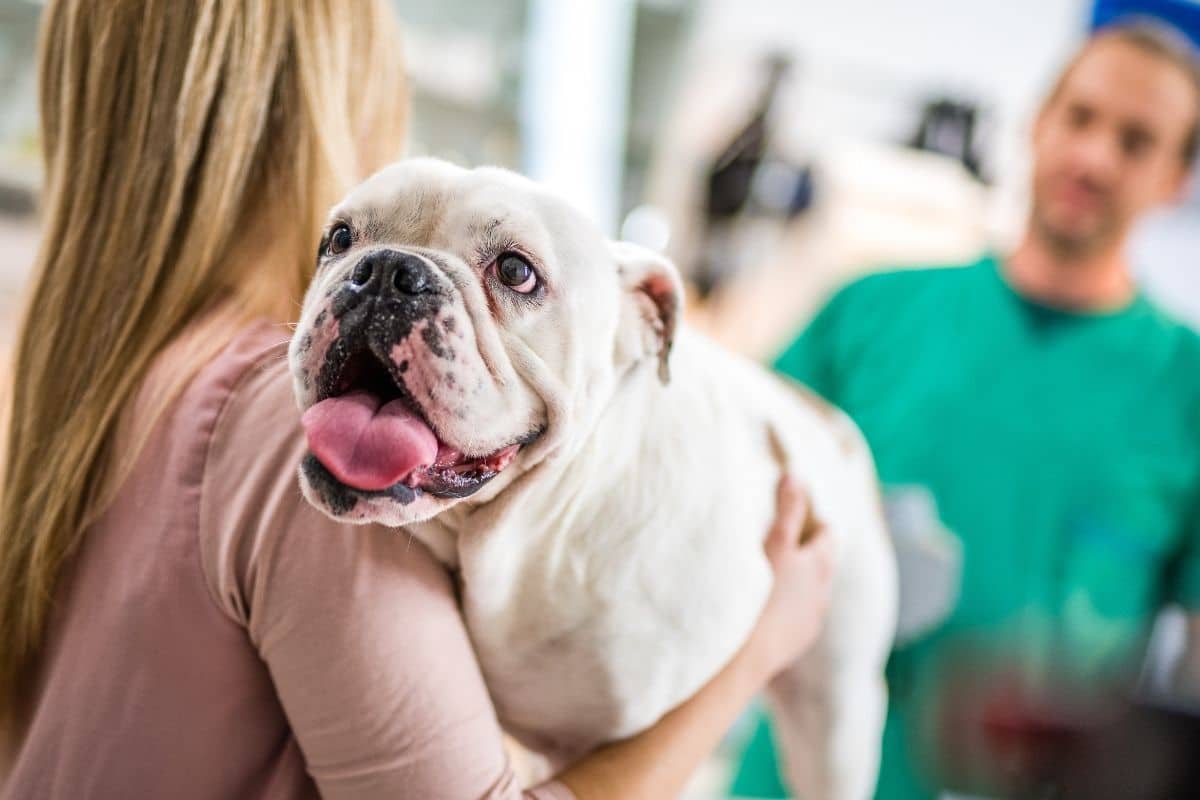
While we always try our best to keep our pets safe, accidents may happen, and your dog may get into a plant that contains toxins. Unless you are a certified veterinarian, the best first step to take if you suspect your dog has ingested any portion of a toxic or unknown plant is to call your veterinarian—or an emergency veterinarian—right away to evaluate risk and the best course of action.
In some cases, the vet may advise you to bring your dog into a clinic immediately to take emergency action if a highly toxic plant has been consumed. In other cases, your vet may recommend that you induce vomiting on your own if that is something you are comfortable doing.
This is generally done by giving approximately one tablespoon of 3% hydrogen peroxide per 15 pounds of your dog’s weight. For this reason, it is a good idea to keep some hydrogen peroxide in your medicine cabinet. Never induce vomiting unless it has been advised by a professional, as this can cause more harm in some cases.
In some cases, no action will be needed for your dog to get past its toxic plant-induced illness. Just keeping your dog comfortable while he or she gets through the mild illness is sometimes the best option. However, it’s always important that you contact the vet. Only your veterinarian will be able to evaluate the level of risk and talk you through the best course of action for your dog’s health.
You don’t necessarily need to avoid these common plants if you have dogs. However, if your pets, it may be best to grow them in an area that is inaccessible to your pets to keep everyone safe – and sane!
[ad_2]
Source link

